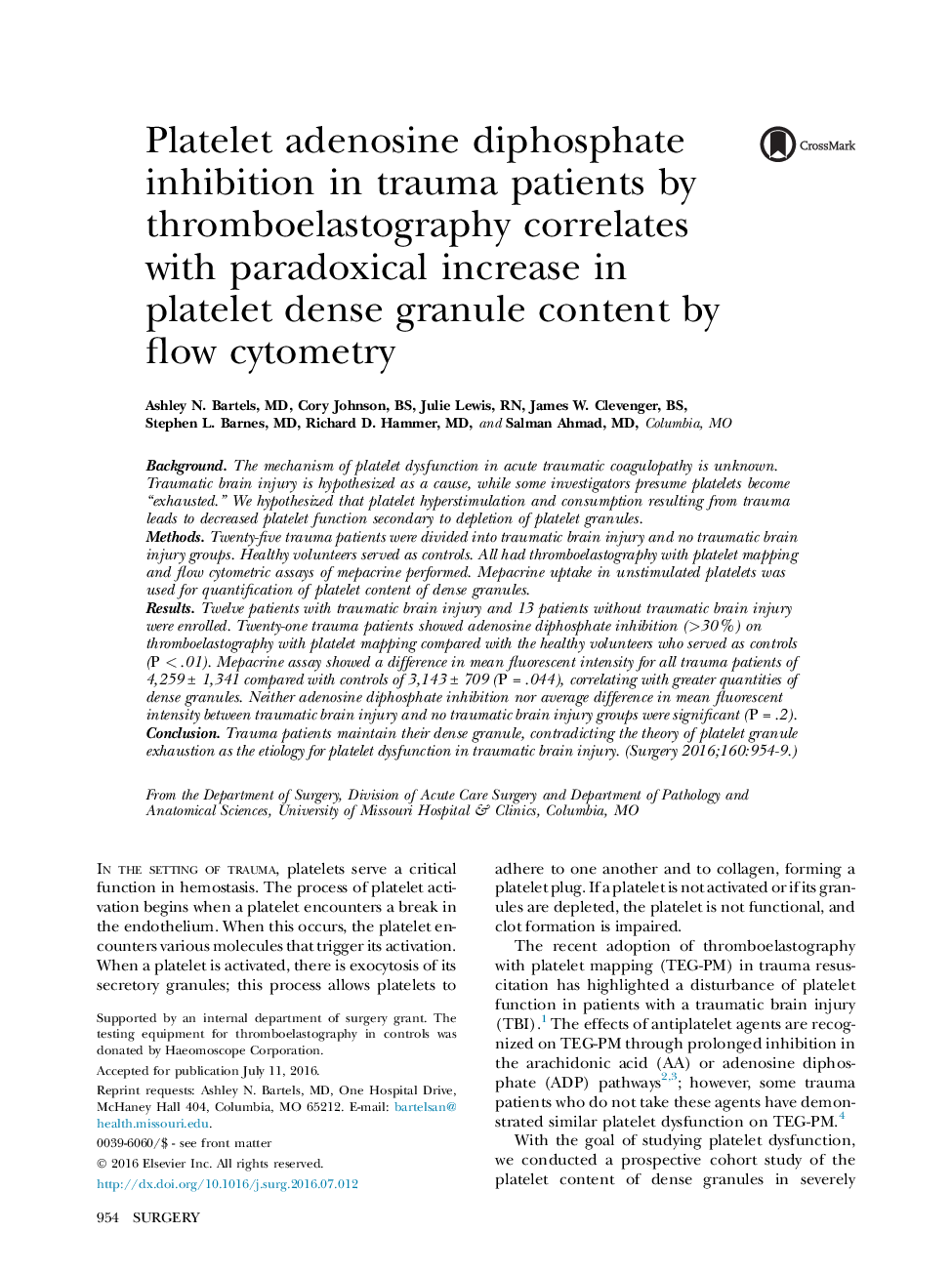| Article ID | Journal | Published Year | Pages | File Type |
|---|---|---|---|---|
| 4306358 | Surgery | 2016 | 6 Pages |
BackgroundThe mechanism of platelet dysfunction in acute traumatic coagulopathy is unknown. Traumatic brain injury is hypothesized as a cause, while some investigators presume platelets become “exhausted.” We hypothesized that platelet hyperstimulation and consumption resulting from trauma leads to decreased platelet function secondary to depletion of platelet granules.MethodsTwenty-five trauma patients were divided into traumatic brain injury and no traumatic brain injury groups. Healthy volunteers served as controls. All had thromboelastography with platelet mapping and flow cytometric assays of mepacrine performed. Mepacrine uptake in unstimulated platelets was used for quantification of platelet content of dense granules.ResultsTwelve patients with traumatic brain injury and 13 patients without traumatic brain injury were enrolled. Twenty-one trauma patients showed adenosine diphosphate inhibition (>30%) on thromboelastography with platelet mapping compared with the healthy volunteers who served as controls (P < .01). Mepacrine assay showed a difference in mean fluorescent intensity for all trauma patients of 4,259 ± 1,341 compared with controls of 3,143 ± 709 (P = .044), correlating with greater quantities of dense granules. Neither adenosine diphosphate inhibition nor average difference in mean fluorescent intensity between traumatic brain injury and no traumatic brain injury groups were significant (P = .2).ConclusionTrauma patients maintain their dense granule, contradicting the theory of platelet granule exhaustion as the etiology for platelet dysfunction in traumatic brain injury.
